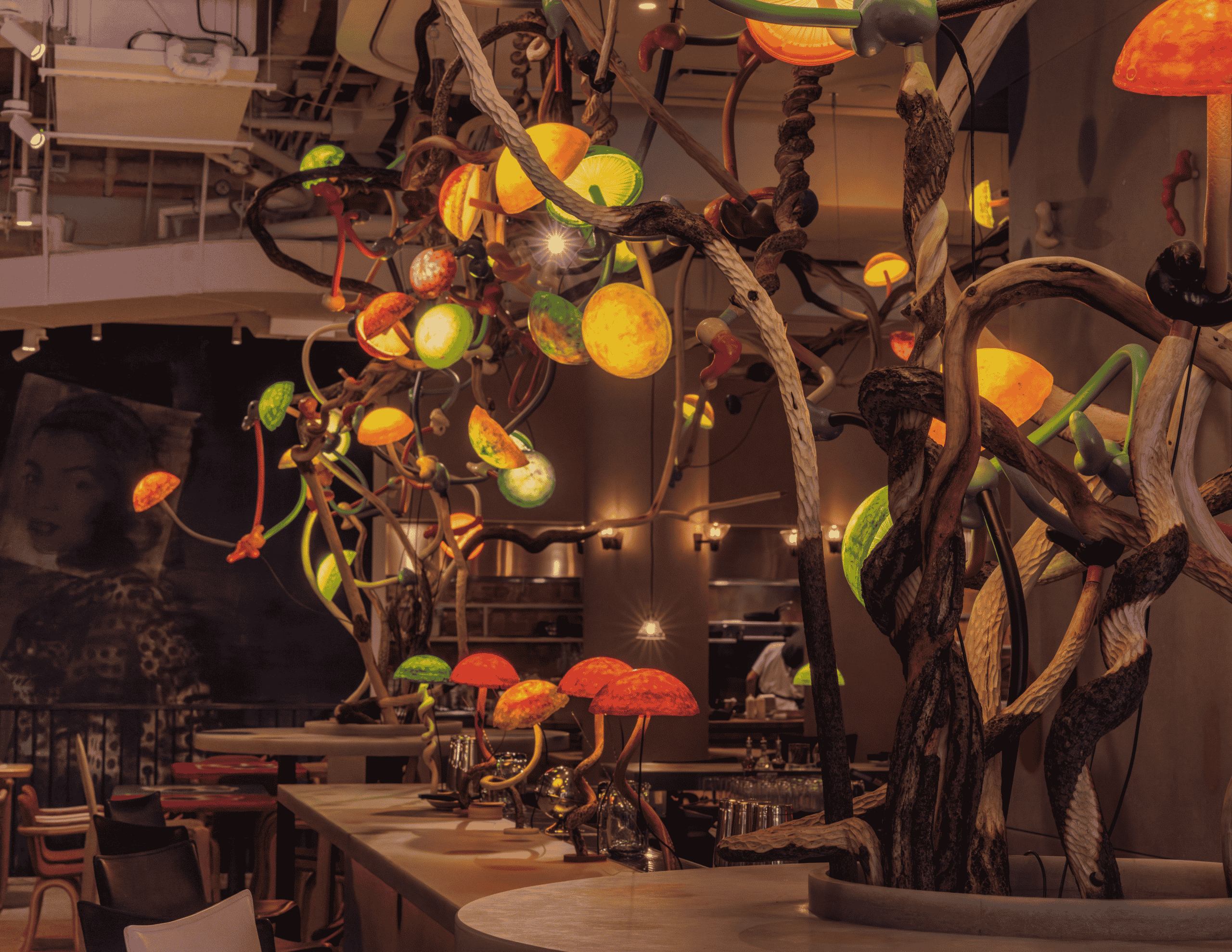Chandelier for Manuela, (2024)
About the work
‘Chandelier for Manuela’ (2024) is a site-specific work, specially commissioned for Manuela, New York. Mika Rottenberg’s whimsical construction consists of a bar and chandelier, illuminated by lights that beam though mushroom-like colored orbs. Playful in both its color and composition, ‘Chandelier for Manuela’ provides restaurant guests with a social, aesthetic and conceptual gathering point.
The work is made of over a ton of plastic waste collected from New York City streets with the help of Inner City Green Team (ICGT). The disregarded plastic is combined with harvested and carved invasive bittersweet vines that flourish and choke forests in Upstate New York. Reclaimed plastic sticks are used to weave the vines together, resulting in a modular system that can be indefinitely replicated. By combining otherwise disregarded toxic and invasive materials, Rottenberg engages in a style that she jokingly calls “eco rococo”.
“Plastic, as a fossil fuel byproduct, is ancient life trapped without the ability to decompose and complete a cycle. This is why it’s such a tragically attractive material”, Rottenberg states. By giving new meaning and shape to these materials, Rottenberg transforms the toxic into something of value, and in doing so creates a restorative counter proposal to the systems of mass production that deeply disrupt our planet.
Reclaimed plastic fabrication system was developed with designer Gary Dusek. Plastic and wood carpentry by artist Garlan Miles and wood harvesting and carving by artist Max Bard. Studio production was coordinated by Natalia Sofia Almada. The LED fixtures were fabricated by RUSHdesign, and the panels for the bar were created in collaboration with Smile Plastics in Swansea. The plastics collection team at Inner City Green Team Economic and Environmental Development (IGCT) consists of NYC Housing Authority residents and is led by Founder Brigitte Charlton-Vicenty.
About the artist
Mika Rottenberg (b.1976, Argentina) is a New York based artist whose practice combines film, architectural installation and sculpture to explore ideas of commerce, labor, and waste and examine the absurdity of our rampant production, distribution, and consumption of objects and energies. For decades, her work has addressed humanity’s relationship with capitalist and toxic systems, examining in particular, the roles that women play in these. She has described her work as metaphorical, a “way to engage with the world… to make sense of it.”
Inspired by circular economics, Rottenberg recently turned her studio itself into a restorative factory, collecting and processing local waste plastic and invasive vines to develop functional sculptures. Rottenberg’s work has been exhibited both nationally and internationally.

